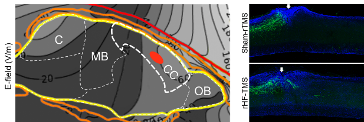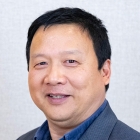You are here
Stimulating Corticospinal Tract Axon Regeneration
Speakers
Abstract
In our laboratory we study how limited numbers of genes orchestrate the axon growth program to build the neuronal network in the mammalian fetus, and then attempt to activate these same mechanisms to enable axon regeneration in the injured adult nervous system. Failure of axonal rewiring after spinal cord injury is the reason that its victims typically remain paralyzed for life. We have identified the RAF - MEK kinase pathway as a key signaling mediator in the program of axon growth. Activation of this pathway in genetically modified mice triggers the expression of multiple regeneration-associated genes and promotes robust regenerative corticospinal tract axon growth, both elongation and collateral sprouting. Newly extending corticospinal axons form synaptic connections with spinal interneurons, and we documented improved recovery of voluntary locomotion in murine models of spinal cord injury. Aiming to translate the finding into the clinic, we found that high-frequency repetitive transcranial magnetic stimulation (HF-rTMS), a non-invasive and clinically applicable technique, activated the kinases MEK1/2 in motor cortex. Post-injury HF-rTMS treatment triggered substantial CST axon regeneration and sprouting as well as sustained recovery of fine motor performance in wild type mice with spinal cord injuries. Moreover, its effects on regeneration and motor behaviors were fully abolished by conditional ablation of MEK1/2 in corticospinal neurons. Collectively, these data demonstrate a central role of neuron-intrinsic RAF – MEK signaling for the rebooting of intrinsic axon growth programs in adult CSNs. We are now teaming up with clinicians to examine the feasibility and efficacy of HF-rTMS as a treatment option for spinal cord injury patients.

Fig. High Frequency transcranial magnetic stimulation facilitates CST axon
regeneration in the spinal cord after injury (Manuscript submitted).

